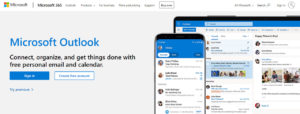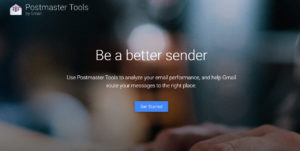Do you know your email sender’s reputation is key to letting your campaign do its magic? While focusing on creating the best content and subject line that will drag readers into a funnel, you are missing one of the most crucial aspects of a successful email marketing campaign. Content is king, but when it comes to email communication channels, ensuring your emails reach your subscribers’ inboxes matters more than anything, turning sender reputation into a top priority for companies.
Sender’s reputation is so powerful that you cannot run campaigns and enjoy the benefits of an email communication channel if it is terrible. Internet service providers care about it even more than you do. Why? Because reputation says a lot about the company, its history, and current behavior. It goes a long way playing a decisive factor for many good reasons. Therefore, you should also care about it.
Let’s get to the bone of this crucial factor by uncovering its basics and importance and learning how to calculate the sender score using the best tools in the niche. Afterward, we will discover the best practices to improve sender reputation, ensuring your efforts, time, and money invested in email marketing strategy are well spent.
Check the Sender Reputation
First Things First – What Is the Sender’s Reputation?
Sender reputation can be described in much the same way as a traditional company’s reputation, that in business terms, refers to how customers, stakeholders, and passers-by view a corporation. In the email channel, it means a public perception of the company by email providers, subscribers, and some crucial parties of the email environment. It comprises IP reputation and domain reputation.
IP reputation
IP reputation is a complex term that measures the behavioral quality of an IP address. It forms based on several crucial characteristics, such as spam traps, email volume, bounce rate, number of unknown or fake email addresses, and email frequency. It also considers how many unwanted requests the company sends, how many spam complaints the company has, or whether it is associated with malware, dangerous domains, or suspicious locations. It even has an IP history, meaning the IP address bears an undeniable imprint if the malicious behavior has been detected lately.
These tiny yet crucial aspects help gauge the risk associated with an IP address, contributing to the overall sender’s reputation.
Domain reputation
Domain reputation is the “health state” of your branded domain. Much like IP reputation, it is determined by numerous factors such as level of engagement or spam complaint rate. It is considered across the vertical, including the domain name you use in your official email address, the domain used inside the newsletter content, the Return-Path domain, and the DKIM signing domain.
On top of that, it is not a singular term. It combines all unique reputations with receivers.
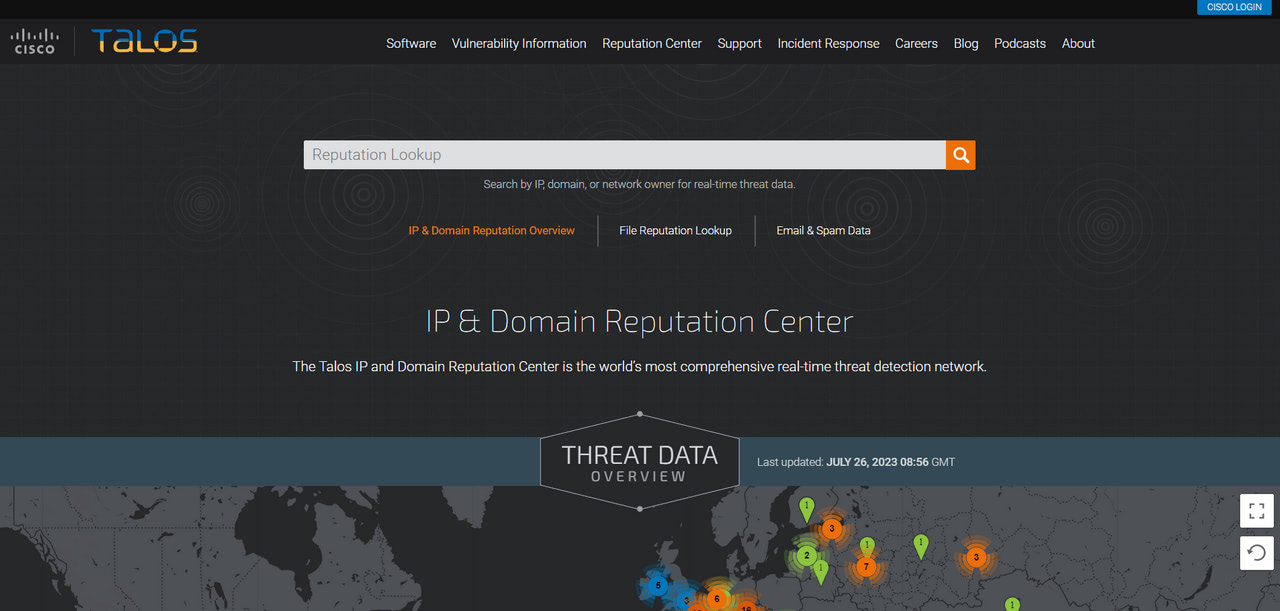
IP and domain reputation center by Talos
Which Factors Affect the Sender’s Reputation?
There is no one-size-fits-all approach for measuring email sender reputation. Each mailbox provider determines whether your email should be delivered to the recipient based on its unique algorithm and crucial factors. However, all of them consider some standard aspects so that a company can reach the audience by nailing them.
Here is the list of the most crucial ones.
Quality of subscription list
ISPs consider the contacts to whom the company’s IP address sends messages. If a company sends to non-existent email addresses or constantly gets into spam traps, it may indicate that it has bought or got the subscription list illegally. “Scrapping” or “purchasing” subscribers is a horrible practice that needs to be stopped. Therefore, it drastically damages a company’s reputation and decreases its credibility.
Level of engagement
Mailbox providers monitor the open rate, click rate, unsubscribe rate, and complaint rate to understand the quality of the content in the emails. The users’ behavior towards an email demonstrates the value company delivers to the recipients, thereby uncovering its methods and behavior in the email channel.
For instance, if the click-through rate is too low, this might mean that the company adopts “dirty” practices to win over clients or get subscribers by tricking them. You should know that CAN-SPAM Act forbids inducing users to view an email message through a misleading email subject line. Not only does it lead to fines and legal issues, but it also damages the sender’s reputation.
Sending volume trends
Email sending volume and frequency may say a lot about the company’s intentions and behavior, especially regarding new players in the field. The deal is new IP addresses that have just entered the market will not send a massive number of emails frequently simply because they do not have a large subscription list yet. Therefore, if a new IP address sends tons of digital newsletters, this looks utterly suspicious and requires extra monitoring.
Even well-established companies with thousands of subscribers may look suspicious to ISPs if they start bombarding their customers.
Age of the domain
ISPs analyze sending history to determine the legibility of the IP address when they first meet it. Age is the first factor they consider because it has a solid correlation to many factors related to the deliverability rate.
If the domain is young, then it calls for particular attention. If the domain is old, it has a rich history and a sender reputation score that tells a lot.

Domain history by GoDaddy
Unsubscribing rate
Unsubscribing rates could mean many things, but all of them are important for ISPs to decide whether to let digital newsletters from the company in or not.
While the rate is within the normal range (according to OptinMonster, it should be below 0.5%), the company is fine. If it is high, this indicates a problem somewhere with the email campaign. For instance, it might signal to mailbox providers that the company is sending low-quality content or spam emails that overwhelm or irritate their clients.
Soft bounces and hard bounces
Both these metrics drastically influence the sender’s reputation. They give vital information to the ISPs as well.
Soft bounces demonstrate temporary problems with delivering the message to the recipient caused by the server, mailbox, or message. For instance, the server was down, the mailbox was full, or the message was too large to be accepted by the mailbox provider. This might indicate that the company uses unreliable software or has a poor email system.
Hard bounces, however, indicate serious problems. For instance, they signal that the subscription list has fake email addresses. Having a high volume of invalid email addresses on the list is dangerous to deliverability and the sender’s reputation because they trigger spam filters.
SPAM complaints and traps
Everything concerning SPAM is bad for an email marketing campaign and strategy. Some believe it to be the worst-case-scenarios for these two reasons.
First, a mailing list including spam trap addresses can signal that the company has acquired subscribers, not legally. For example, a company has bought it or used tools to “harvest” emails from websites.
Second, it signals that the company doesn’t use an opt-in strategy. This means the subscription list is full of disengaged subscribers or subscribers who have not consented.
These situations force ISPs to monitor the company closely and do additional checks before allowing it to reach the inboxes.
Blacklist
Spam complaints and traps may easily lead to blacklists. Although the size and notoriety of the blacklist matter, as a rule, it has damaging consequences for the company.
Companies that are blacklisted have a high chance of being rejected before ever reaching the recipients. If you are on a blacklist used by a primary email provider, your digital newsletter will never see the subscriber.
To make matters worse, nobody notifies you about being blacklisted. It is also tough to get out of this list. Not only will you damage your sender’s reputation and, therefore, deliverability rate, but you will lose your precious time in recovering from this situation.

Why Is It Important to Improve Sender Reputation?
Sender’s reputation does not appear out of nowhere or can be built overnight. Establishing and strengthening it may take years and a lot of effort, money, and human resources. However, the sad truth is it can be ruined with just one failed email campaign or one wrong decision.
ISPs are merciless in protecting recipients from malware, spammers, and attacks. Poor sender reputation means that the company may hurt the recipients. Therefore, ISPs should thwart all its attempts to reach the inbox to protect them. To make matters worse, you cannot avoid a negative domain reputation by switching ESPs. It will follow you everywhere.
Ensuring the legitimacy and quality of the sender’s reputation is the way to prove ISPs that the company means no harm to the recipient, and their emails may pass the barriers and reach the inboxes.
There is more. When sender’s reputation is well-established, it does lots of good for the company. For instance,
- It creates a solid foundation for running email marketing campaigns.
- It positively impacts the health of the overall email system.
- It ensures email delivery.
- It provides a more consistent inbox placement.
- It increases the deliverability rate.
- It decreases throttling.
- It affects email campaign performance.
- It indicates the level of engagement, providing valuable insights for improvement.
- It ensures time, money, and effort are well spent.
- It reinforces overall brand identity improving the company’s credibility and trustworthiness.
- It even helps to fight against cyberattacks. Companies with good IP reputations assist ISPs in identifying and suppressing cybercriminals, spotting malicious intentions, sending suspicious emails to the spam folder, or blocking them entirely.
Lastly, tracking and improving the sender’s reputation is crucial because it can be easily destroyed. Even if you do not purchase your subscription list, there are still a bunch of reasons that may lead to a poor sender’s reputation, for instance:
- Unhealthy subscription list.
- Poor segmentation.
- Poor quality email content and design.
- Inconsistency with email campaigns.
- Spam traps and blacklists.
However, the biggest issue lies in shared servers. As a rule, young companies do not buy dedicated hosting, using less expensive options. They share IP addresses between thousands of accounts. If some of these accounts earn a bad reputation, it will also affect others by default.
How to Check Email Sender Reputation?
Email sender reputation is a numerical presentation. It is determined by measuring your IP address’s performance across metrics crucial for mailbox providers and subscribers. It is expressed as a number between 0 and 100.
If you have a high sender score, your emails should be delivered to your recipients’ inboxes with no problem. If your score is low, ISPs will be less likely to trust your emails and may send them to the spam folder or reject them immediately. Depending on the sender’s score, companies build strategies to improve sender reputation.
So, how to define your sender’s reputation score? Use professional instruments for that. Here are the top 3 in the niche.
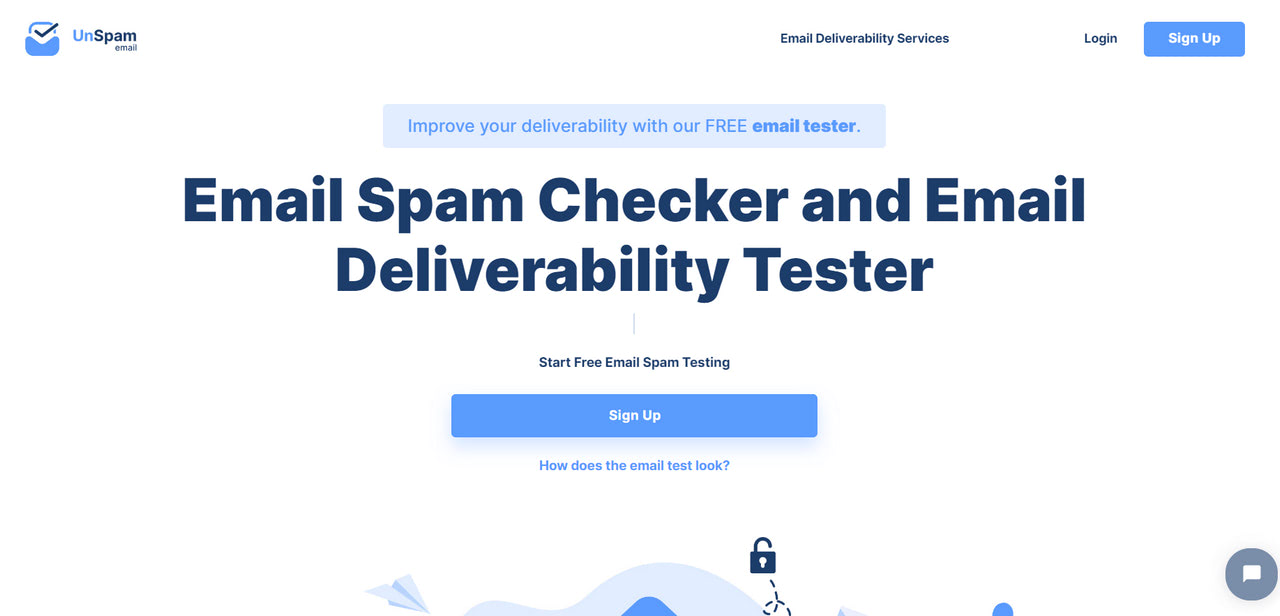
Unspam is a professional platform created to determine email deliverability and test emails against spam. It looks up your sender reputation by IP address and domain, analyzing many crucial factors. It checks blacklists, determines whether SPF and DKIM are correctly set up, defines the performance of domain suffixes, and sees whether reverse DNS is in place.
On top of that, it identifies the potential issues with accessibility, highlights problems with email design, and even checks for broken links in your emails.
The critical advantage of Unspam lies in the report that it generates. It assembles all vital information under one roof, giving the company quick access to crucial details concerning email campaigns.

Google Postmaster is a multifunctional platform that comes with numerous capabilities. Although it primarily helps email marketers analyze email performance by tracking crucial metrics, still finding data about the company’s sending domain and IP address to define the sender’s reputation score is among its primary responsibilities.
It gives insights into reputation by diagnosing factors vital for Gmail. It even shows the rate at which emails pass SPF, DKIM, and DMARC protocols giving a deep insight into the email system that is crucial to taking corrective action when necessary.
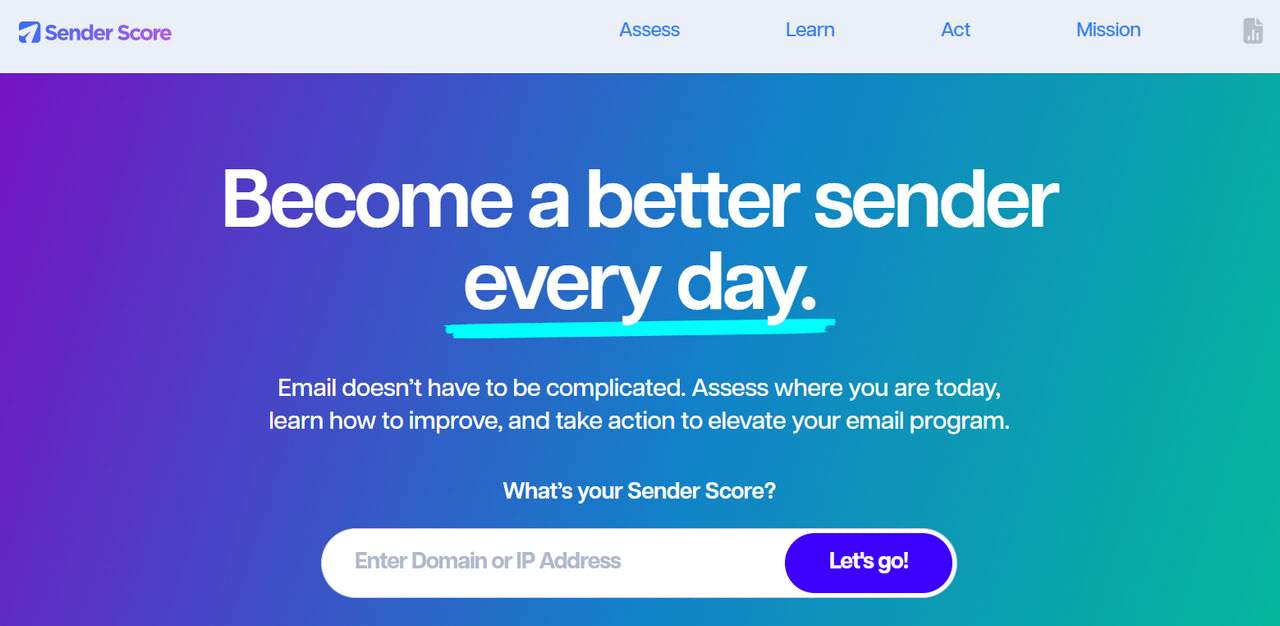
Sender Score is another popular instrument where business owners may get a free assessment of their IP address and domain name to determine the current sender’s reputation. It analyzes a history of sending habits.
For instance, it analyzes the number of spam traps your IP address hit last week, the number of company emails blocked, and the number of recipients who marked the company as spam. On top of that, it checks all the essentials.
Its score ranges between 0 and 100; the higher, the better. Score that is above 80 means you are doing a great job. Everything between 70 and 80 is fine, but you should closely monitor your campaign and its metrics. If the score is below 70, it is time to amplify email performance and improve sender reputation.
How to Improve Sender Reputation?
Building trust with ISPs is a long and bumpy road that needs to be done to ensure your emails land in the inbox. Numerous strategies and approaches assist in this matter. Let’s start with the essential preparation and move to the best practices to build your way up.
Preparation
Before following professional tricks and approaches, it is crucial to underlie a solid foundation for an email marketing campaign. As a rule, this involves taking these steps:
Get closely acquainted with GDPR laws and CAN-SPAM Act
Both these documents are crucial for a company to operate in the digital expanses. They define the rules and establish requirements for commercial emails to provide a safe environment for recipients by giving them the right to have you stop emailing them. These laws spell out tough penalties for violations and may cost you money.
Following these regulations protects your company from legal and unexpected financial issues. It also ensures your email hits the essentials, which decreases the number of spam complaints leaving your sender’s reputation safe and sound.
Choose a reliable server
Leasing a dedicated server is a surefire way to ensure campaigns’ reliability, high performance, and a good IP reputation. It is also a way to avoid the consequences of your neighbors’ poor marketing decisions. If you cannot afford it, you should exercise caution with the shared server by constantly checking your IP reputation.
Secure the right email marketing platform
EMS is the best way to run email marketing campaigns by giving business owners more control over how they reach their customers. They benefit companies a lot: they help to create professional email designs, grow the customer base, run and analyze campaigns, and provide a seamless workflow.
However, the problem is that the market is teeming with offers. Therefore, finding the best option that meets your unique requirements and helps you comfortably grow is crucial.
Check and double-check your domain name
The web has been with us for over three decades; chances are your domain has been used already. It is crucial to know its history and scores.
Warm up your domain
If you have a brand-new domain, you need to warm it up. Warming up prepares your domain for sending lots of emails without burning out. This stage involves these steps:
- Wait at least three months before running large campaigns.
- Set up one email account. You can add one more in 1-2 months.
- Set up the “from” line and create a signature.
- Get technical configuration right. Set up SPF and DKIM, and DMARC records.
- Send first emails manually. Wait several weeks before doing this.
- Ensure the frequency and volume of emails you send during the domain warm-up process seem natural.
- Create your first campaign for trusted email addresses to nullify the bounce rate.
Modify your distribution channel to acquire only engaged subscribers
How can it be done? Supply your websites and landing pages with a double opt-in form. This form collects only those users who have confirmed the subscription two times. Although this may drastically slow down the process, it dramatically improves the hygiene of the email list. It also ensures a high email deliverability rate, improves sender reputation, and, most importantly, meets GDPR compliance.
When creating a double opt-in routine, remember to ask for consent to send different types of emails. It is highly recommended to ensure your subscribers are ready to receive informational newsletters from your company as well as promotional, inaugural, re-engaging, and others.
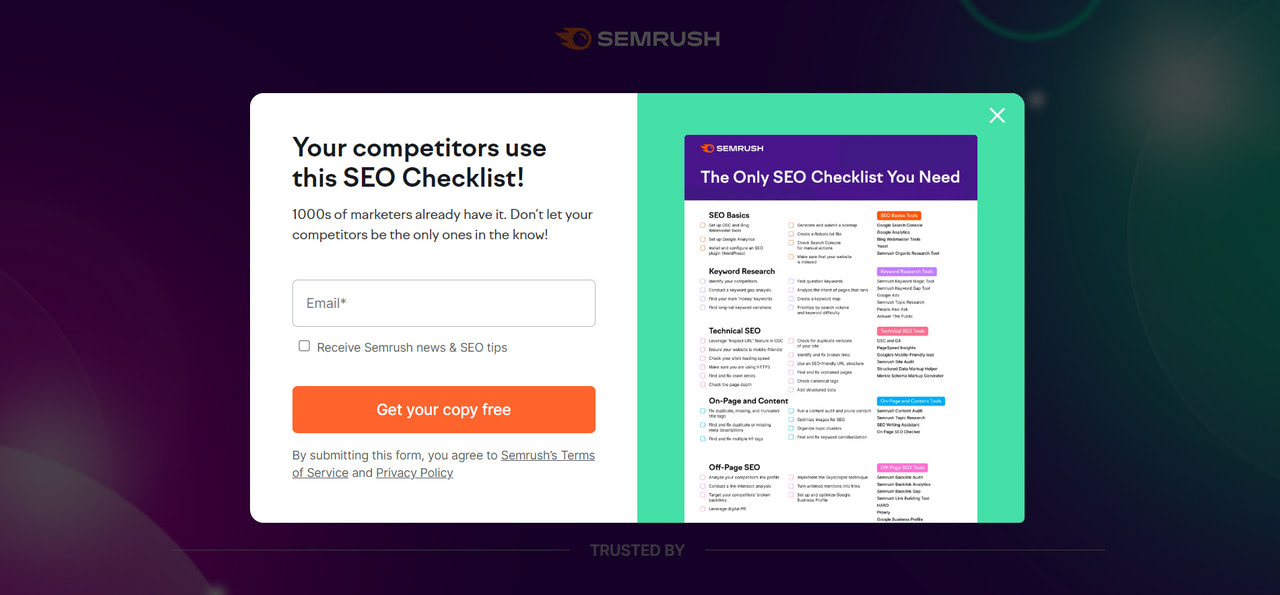
Strategies to Adopt
Numerous solutions and tips help to improve the sender reputation and maintain its high score. Let’s consider the most crucial ones:
Regularly check your sender’s reputation score
If it is 90 and above, then you are fine. It is a warning sign if it is between 50 and 90. The time has come to take a closer look at your campaign, define weak spots and fix issues. If the score is below 50, it is terrible – you should act fast.
According to studies done by Return Path, a score that drops from 83 to 70 can see the delivery rate decreasing by approximately 20%, leading to a massive loss of revenue. So, the faster you react to the sender’s score decline, the more chances you have to save your revenue.
Track your email marketing metrics
Open rate, click-through rate, bounce rate, and engagement rate are the ones that describe the situation. If you see a decline, something is wrong – it is time to take measures.
Check blacklists
Getting into one or several email blacklists is child’s play; however, getting out is a true challenge. To make matters worse, no one will notify you about that.
The best practice is to avoid blacklists at all costs. This means: sending emails only to verified email addresses, avoiding spam words, personalizing content, sticking to a reasonable volume of emails per campaign, etc.
Visit the blacklist’s official page to familiarize yourself with their criteria for red-flagging an IP.
Get off the blacklist as soon as possible
Never leave your IP address in a blocklist database. Otherwise, you may say goodbye to a good sender reputation. At a minimum, take these steps:
- check the unlisting process;
- identify and remove the reason for which you landed on a blacklist;
- send an unlisting request to blacklist owners.
Alternatively, you may use professional help and ask a team to do all the heavy lifting.
It is crucial to note that after getting out of the blacklist, you must start a recovery process since your email-sending behavior will be under close observation.
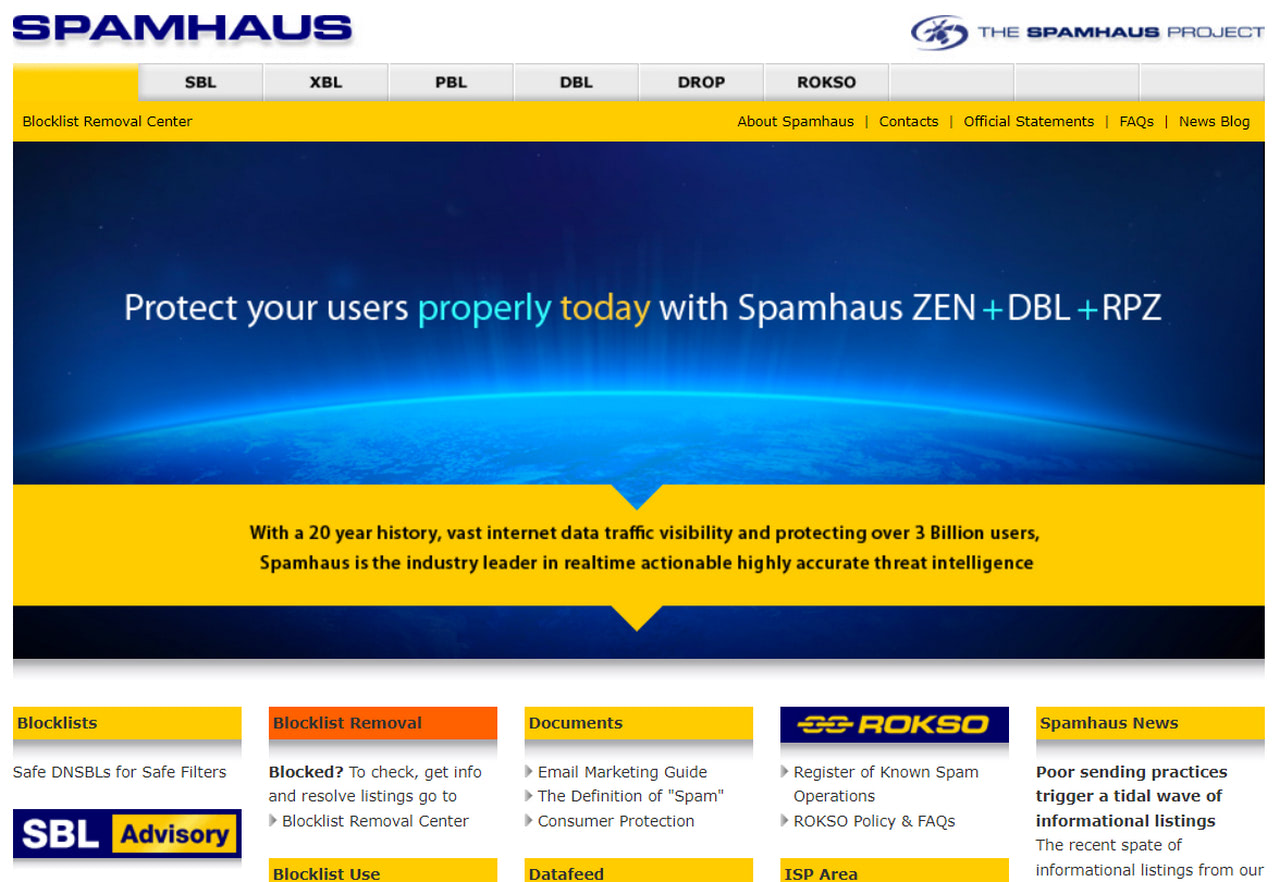
Spamhaus – blocklist removal center
Clean your subscription list regularly
The hygiene of a mailing list is crucial for many reasons: it increases engagement, reinforces delivery, and amplifies the efficacy of campaigns. Therefore,
- Remove unengaged contacts.
- Delete email addresses with hard bounces.
- Closely track email addresses with soft bounces.
- Instantly remove users who have unsubscribed.
- Never “harvest” or purchase email addresses.
- Keep your list of spam traps to avoid them.
- Segment your list correctly.
Follow the best practices for running email campaigns
Following the best practices for running email campaigns is the best way to build a strong sender reputation. This includes the following:
- Strike a balance in the email marketing calendar by creating a consistent schedule.
- Personalize your campaigns.
- Target the right market segments.
- Design professional HTML emails.
- Create email campaigns that deliver value by sending high-quality email content.
- Avoid spam trigger words.
- Create a strong subject line.
- Do A/B tests.
- Send emails from your domain.
- Adopt practices to improve deliverability rate and open rate.
- Run retention campaigns with caution.
- Always listen to your subscribers.
Last but not least, verify the email list with Unspam. Not only does it provide you with a sender’s score, but it also identifies weak spots and gives valuable insights for improvement.
Conclusion
Getting your emails in the inbox sounds like the most straightforward task: create an email, choose the target audience, and hit the “send” button. However, in practice, it is a true challenge with many obstacles. If you want to face it with music, it is crucial to take your sender’s reputation seriously since it is a decisive factor in the delivery of your emails and the efficacy of email campaigns.
Improve sender reputation by hitting the essentials and adopting the best practices in the niche. Start by benchmarking where you are now. Depending on the score, take corresponding measures. Hit the essentials: comply with permission policies, secure a dedicated server for your company, and do all vital preparations, such as authenticating the email address and warming up the domain. Then follow professional tips to level up the sender’s score.




